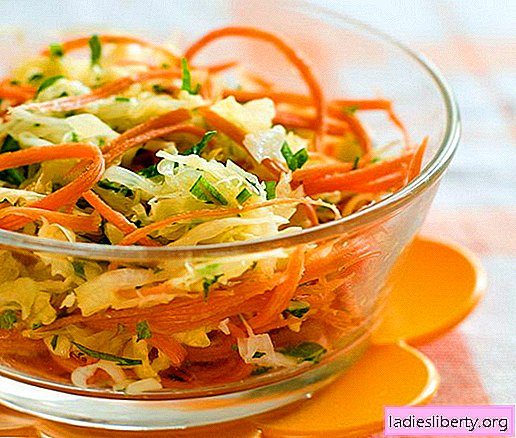
This article will discuss such a fish as haddock, its main characteristics and beneficial properties. And also whether haddock is harmful.
Fish description
Haddock is a type of fish that live in the sea. It belongs to the Cod family. The seas in which haddock usually lives and breeds are found in the Arctic and Atlantic oceans. In our area, such a fish is not often found, as it lives in more saline waters. But she did not become less popular from this, since the benefits of haddock are appreciated by many fish lovers.
Haddock can reach about half a meter in length. The approximate weight of an average individual is three kilograms, but it is not uncommon to find fish with a large weight (up to 20 kg) and a length (more than 1 meter). The fish itself is flat, its back is grayish with a purple hue. The belly has a silver or white color, and on the sides is a horizontal line of dark color. The main feature of this fish is a dark spot under the largest fin, which is located on the back. The upper jaw protrudes slightly in comparison with the lower part.
The habitat is shallow, on the continents with a depth of approximately two hundred meters. Haddock eat caviar, fry, mollusks and other small marine prey. This fish is environmentally friendly because it does not accumulate mercury.
Haddock has been growing for 15 years. The growth and length of individuals depends on the conditions in which they inhabited.
What is rich in haddock?
The benefit of haddock is that it is saturated with such beneficial substances:
● polyunsaturated fatty acids (including omega-3);
● calcium;
● phosphorus;
● selenium;
● copper;
● bromine;
● potassium;
● iodine;
● iron;
● magnesium;
● fluorine;
● zinc.
The vitamins that haddock has in its composition:
● vitamin A (retinol);
● vitamin B1 (thiamine);
● vitamin B2 (riboflavin);
● vitamin PP (niacin);
● vitamin C (ascorbic acid);
● Vitamin E (tocopherol).
The energy value of products per 100 grams is:
• 17.2 grams of protein;
• 0.2 grams of fat;
• 0.1 grams of carbohydrates.
The caloric content of haddock per hundred grams is 70 kcal.
Details on the benefits of haddock
The body will get the maximum benefit if you eat fish regularly. The beneficial effect is provided by useful microelements and substances available in haddock:
1. Selenium normalizes the functional processes of the gland of the thyroid secretion, the gastrointestinal tract, is a prevention of cancer. Also, selenium has anti-aging properties, due to the destruction of certain particles that have a devastating effect on new cells.
2. Bromine regulates the central nervous system, thyroid gland, normalizes metabolic processes in the body, as well as gonadal processes.
3. Iodine replenishes the iodine deficiency of the body, while improving mood, appearance, mental work, and more.
4. Fluoride helps to form dental and skeletal tissue compounds;
5. Iron has a beneficial effect on the vital activity of the human body, and replenishes the composition of the cytoplasm and nucleus of many cells, complex proteins and other components.
6. Copper stabilizes metabolic processes, helps synthesize proteins with tissue compounds and forms hemoglobin.
7. Zinc is a good antioxidant and is involved in the formation of regenerated tissue compounds, provides active cell activity.
8. Sodium is involved in the normalization of water and salt balance in the body, strengthens the nervous system, as well as muscle mass.
Vitamins contained in haddock provide:
● normal exchange processes;
● formation of strong hard tissues of teeth and bones;
● normalization of blood flow circulation;
● healthy heart;
● conversion of fats, sugars and carbohydrates into the body into energy;
● growth and regeneration of newly formed cells;
● good regeneration of tissue compounds;
● improved blood coagulation ability;
● exchange of amino acid elements;
● anti-aging effect;
● strengthening the walls of blood vessels and capillaries;
● strengthening muscle tissue;
● persistent immunity against bacterial and viral diseases;
● oxygen nutrition of cells;
● control of cholesterol in the body;
● improving the functioning of the organs of vision and reduces their rapid fatigue;
● slows down the aging process;
● good effect on the gastrointestinal tract.
Also, fish contains the omega-3 element necessary for the human body. This valuable substance is not produced in our body, so you can get the necessary amount of these fatty acids with the use of fish. In addition, omega-3 makes the walls of blood vessels more elastic, and reduces the amount of cholesterol in the body. This element also prevents diseases such as stroke, heart attack and atherosclerosis. Has a good effect on the work and nerve connections of the brain, memory. Increases concentration ability and response to environmental factors.
This fish is a low-calorie product that contains a lot of protein. Therefore, it can be included in the daily diet of those people who follow a diet or want to lose extra pounds.
Regular use of haddock in food contributes to a significant improvement in appearance: hair begins to grow better, the skin acquires a uniform beautiful color, becomes more elastic and silky to the touch.
Could there be harm from haddock?
Haddock cannot do any significant harm, as it is a pure fish that does not accumulate heavy metals inside its body.
The only contraindications to the use of this fish is an allergy to seafood. It is caused by proteins that are found in any kind of fish. Haddock should also not be used if there is an individual intolerance to the fish.
The right product choice and preparation
It is improper storage at grocery stores that can be harmful. In order to correctly choose a fresh haddock in stores or supermarkets and not get poisoned, you need to follow some simple rules:
1. The smell. A characteristic marine smell should be present. The absence or presence of other odors indicates that the product has deteriorated or has been improperly stored.
2. Eyes. They begin to deteriorate first, so you need to pay special attention to them. They should be bright and clear. Cloudy eyes speak of fish stale.
3. Gills. Also should be a light shade.
4. Haddock fillet has a characteristic white color. A yellowish hue indicates that the product is stale.
Haddock can be prepared in a variety of ways using different heat treatment methods. It can be cooked, fried, smoked, salted, stewed, steamed, served with various sauces and spices, added to pies and dumplings, casseroles, and used as a basis for cutlets.
But, following a therapeutic diet (if there are problems with the gastrointestinal tract), it is necessary to use more healthy and gentle methods of processing fish, namely baking, stewing, grilling or steaming.











